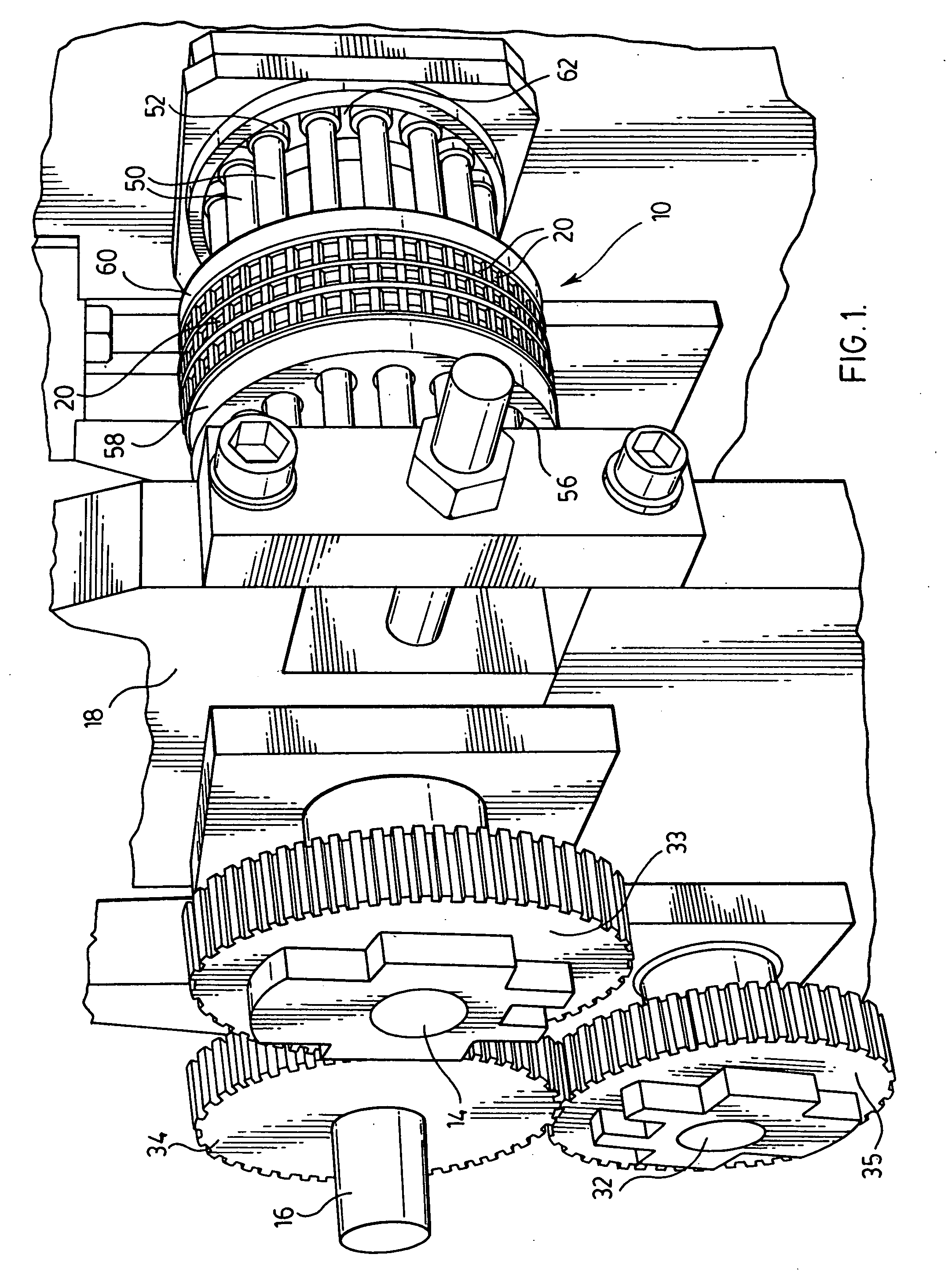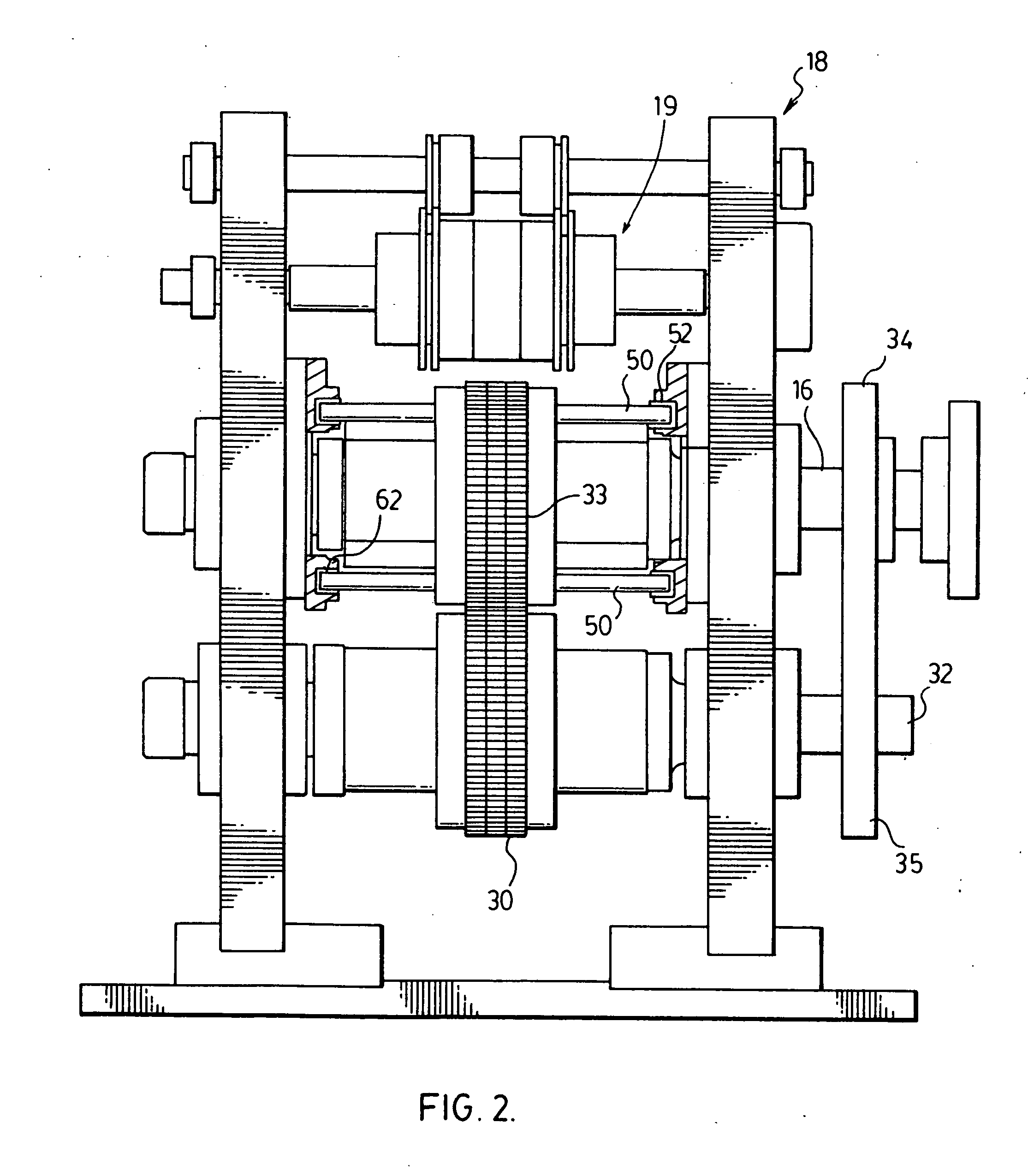Continuous rotary hole punching method and apparatus
a technology of continuous rotary hole punching and deformation strip, which is applied in the direction of sustainable manufacturing/processing, box making operations, paper/cardboard containers, etc., can solve the problems of insufficient or no waste ejection, low production speed, and existing methods for punching material strips. , to achieve the effect of positive ejection of waste materials
- Summary
- Abstract
- Description
- Claims
- Application Information
AI Technical Summary
Benefits of technology
Problems solved by technology
Method used
Image
Examples
example
[0048] A prototype module illustrated most clearly in FIGS. 1, 2 and 9-11 was built to examine the viability of rotary hole punching. The machine utilized three rows of tooling to produce three transverse rows of punched holes in a given strip of lead alloy. For “Test 1”, cast and rolled forms of both pure and alloyed lead were run through the machine. Punching of the closely spaced and high tolerance holes was 100% successful.
[0049] The wire width of a lead alloy grid produced was about 0.030 inch and approximately 85% of the strip material was removed as waste. Up to about 96% the strip material can be removed as waste, leaving a wire thickness as thin as 0.010 inch. The thickness of strip material tested was about 0.030 inch.
Additional Tests
[0050] Seven more tests were conducted with the rotary punching machine, to determine whether it was capable of performing the same accurate and precise operation for producing 0.030 wire width on various materials, other than lead, with th...
PUM
| Property | Measurement | Unit |
|---|---|---|
| Fraction | aaaaa | aaaaa |
| Thickness | aaaaa | aaaaa |
| Angle | aaaaa | aaaaa |
Abstract
Description
Claims
Application Information
 Login to View More
Login to View More - R&D
- Intellectual Property
- Life Sciences
- Materials
- Tech Scout
- Unparalleled Data Quality
- Higher Quality Content
- 60% Fewer Hallucinations
Browse by: Latest US Patents, China's latest patents, Technical Efficacy Thesaurus, Application Domain, Technology Topic, Popular Technical Reports.
© 2025 PatSnap. All rights reserved.Legal|Privacy policy|Modern Slavery Act Transparency Statement|Sitemap|About US| Contact US: help@patsnap.com



